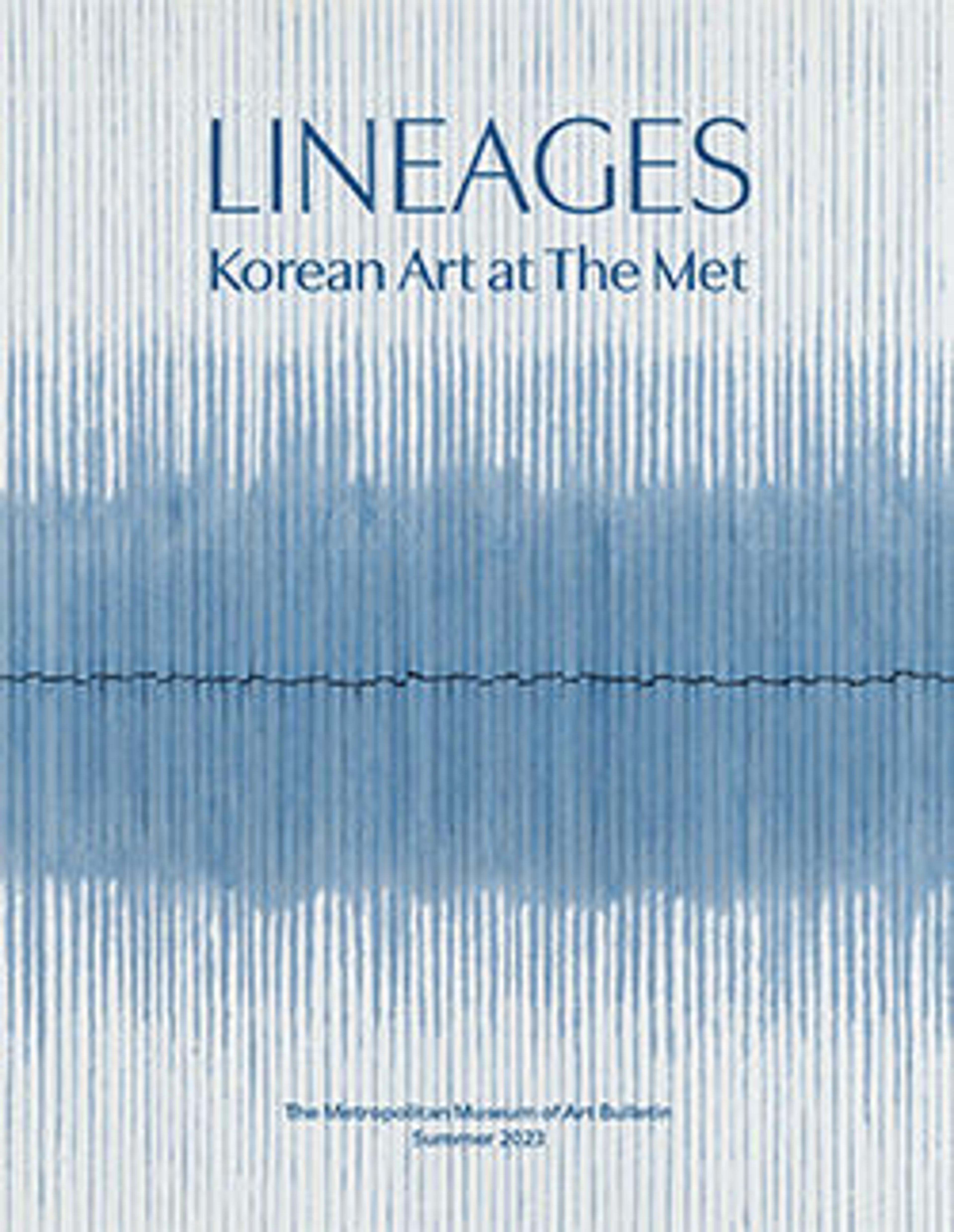Portrait of Yun Dongseom (1710–1795)
The identification of the sitter as Yun Dongseom, a celebrated scholar, calligrapher, and civil-official, can be confirmed by two other extant portraits in Korean collections. Here, the elderly statesman, dressed in formal attire, is shown in three-quarter view seated in a high-back chair draped with a leopard skin, and against a blank background. A heightened sense of realism guides the rendering of the figure, as was the trend in portraits of the time. The detailed treatment of Yun’s face, through crisp, fluid lines and subtle shading, captures both his physical characteristics and strong personality. A quintessential example of traditional Korean ancestral portraiture, this painting would have functioned as the centerpiece of a family shrine dedicated to honoring the family’s male lineages, in accordance with the strictures of neo-Confucian philosophy.
Although there is no inscribed date, this piece is similar to dated works from the late eighteenth century. One detail that may narrow the dating is the belt: those made of rhinoceros horn and gold were reserved for officials of second rank or higher, a status Yun achieved in 1790. If painted during his lifetime, this portrait would date to 1790–95. Alternatively, the scroll may have been painted posthumously (likely within a decade of his death), a common practice for ancestral portraits.
Although there is no inscribed date, this piece is similar to dated works from the late eighteenth century. One detail that may narrow the dating is the belt: those made of rhinoceros horn and gold were reserved for officials of second rank or higher, a status Yun achieved in 1790. If painted during his lifetime, this portrait would date to 1790–95. Alternatively, the scroll may have been painted posthumously (likely within a decade of his death), a common practice for ancestral portraits.
Artwork Details
- 윤동섬 초상 조선
- 尹東暹肖像 朝鮮
- Title: Portrait of Yun Dongseom (1710–1795)
- Artist: Unidentified artist (Korean, late 18th–early 19th century)
- Period: Joseon dynasty (1392–1910)
- Date: ca. 1790–1805
- Culture: Korea
- Medium: Hanging scroll; ink and color on silk
- Dimensions: Image: 52 3/8 × 30 3/8 in. (133 × 77.2 cm)
Overall with mounting: 76 × 31 in. (193 × 78.7 cm)
Overall with knobs: 76 × 33 1/4 in. (193 × 84.5 cm) - Classification: Paintings
- Credit Line: Purchase, Harris Brisbane Dick and 2014 Benefit Funds; Friends of Korean Art, Locks Foundation, Hyun Jun M. Kim, and Tchah Sup and Myong Hi Kim Gifts, 2014
- Object Number: 2014.605
- Curatorial Department: Asian Art
More Artwork
Research Resources
The Met provides unparalleled resources for research and welcomes an international community of students and scholars. The Met's Open Access API is where creators and researchers can connect to the The Met collection. Open Access data and public domain images are available for unrestricted commercial and noncommercial use without permission or fee.
To request images under copyright and other restrictions, please use this Image Request form.
Feedback
We continue to research and examine historical and cultural context for objects in The Met collection. If you have comments or questions about this object record, please contact us using the form below. The Museum looks forward to receiving your comments.
